QUESTION: 'what is the safest natural substrate for my bearded dragon'
a bearded dragons natural soil in the central australian region is mainly a soil type called 'kandosols' and in particular 'red kandosols' are well-drained, permeable soils. Most Kandosols have low fertility and are susceptible to surface soil degradation such as hardsetting and crusting.
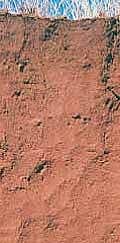
this surface soil degration, hardsetting and crusting gives the central australian region and outback were central bearded dragon live naturally in the wild, leaves a clay and sand based soil, that is hard set
(solid) and has slight soil degration which gives the effect of a slight dusty layer of fine sand and dust. the clay and sand mix to create 'red kandosols' gives the animal the ability to dig a burrow, or nesting place nearing the end of the wet season and entering the dry season, giving the soil the ability to have a small cavern type nesting spot and dry hard and crusting, still giving the small hatchling dragon the ability to emerge from the egg and dig through this thin crusty layer whilst keepign them safe from climate conditions.
there are many different soil types in austalia, and the GRDC desided to classify these different soil types in the 10 main types in 1996. in each catagory there consists many different variations of this soil, as they are found all over australia in different places. these catagories contain Calcarosols, Chromosols, Dermosols, Ferrosols, Kandosols, Kurosols, Rudosols, Sodosols, Tenosols, and Vertosols.
Now, the area of central australia does not only consist of Kandosols, but also a variation of Calcarosols, Rudosols, Sodosols, Vertosols, and to an extent Tenosols.
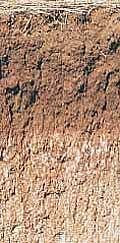 Calcarosols- These soils contain calcium carbonate (as limestone, calcrete ***or other forms) as soft or hard fragments or as a solid layer. They occur in areas with low rainfall. Limitations for agriculture include shallow depth, low water retention and wind erosion. this type of soil is prominantly in the area of lower south australia on the rims or outskirts of central bearded dragon habitat, although some still live there it still explains a similar soil to the of central Australia with hard fragments and top soil and tow water retention leaving a hard packed soil.
Calcarosols- These soils contain calcium carbonate (as limestone, calcrete ***or other forms) as soft or hard fragments or as a solid layer. They occur in areas with low rainfall. Limitations for agriculture include shallow depth, low water retention and wind erosion. this type of soil is prominantly in the area of lower south australia on the rims or outskirts of central bearded dragon habitat, although some still live there it still explains a similar soil to the of central Australia with hard fragments and top soil and tow water retention leaving a hard packed soil.
*** Calcrete is a chemical balance or configuration that makes the soil go hard, it is when calcium and also magnesium disolve in water when the water evaporates they form small crystals and these crystals can keep growing when more carbonates (chemicals liek calcium and magnesium) gather in the area along with water. this hardens the soil, giving it the name cal-crete (cal for the calcium and other carbonates) and (crete relating to the strength of concret) these carbonates are found naturally in the soil, especially when the soil is high in clacium carbonate. this soil is similar to the dangerous product 'calci-sand' it has the same effect, the calci sand will even harden and become calcrete inside your dragon digestive tract, this can cause problems like impaction which can lead to death. this is why it is dangerous to use calci-sand as a substrate.
for more imformation on calcrete and other hardening of soils relating to sand and calcium and carbonates, read this link http://www.ifgworld.org/subsites/documents/document_view.asp?title=Calcrete&siteid=9&id=135
Rudosols- Rudosols are a widespread and diverse group of soils. Most have few commercial land uses because of their properties or occurrence in arid regions, or both. The largest areas occur in the desert regions of arid central and northwest Australia. In contrast, fertile variants formed in alluvium are used for cropping. this soil is scattered and rarely prominant in one place, except over the area of alice springs, its dy low water retention soil of very hard packed, deep sand and clay, leaving a hard dusty surface.
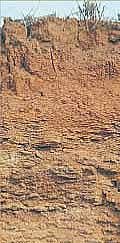 Sodosols- Sodosols have an abrupt clay increase down the profile and high sodium content, which may lead to clay dispersion and instability. Seasonally perched water tables are common because of the structure of the subsoil. These soils are usually associated with a dry climate and they are widely distributed in the eastern half of Australia and the western portion of Western Australia, where they are used extensively for grain crops in the west. These soils are usually very hard when dry and are prone to crust formation. The dispersive subsoil makes them prone to tunnel and gully erosion. in the center of australia it is far too hot and dry to use this soil for cropping. this soil is scatterd prominantly over the area of central australia, far east and far west. it has high levels of clay and elaves a hard crust, thus the soil is made of hard packed clay and a misture of sand and soil. it is easily effected by water and wind which in turn created gullies and tunnels, these gullys are created and look similar to a small version of the grand canyon, my family went in a helicopter over some of these canyons over alice springs.
Sodosols- Sodosols have an abrupt clay increase down the profile and high sodium content, which may lead to clay dispersion and instability. Seasonally perched water tables are common because of the structure of the subsoil. These soils are usually associated with a dry climate and they are widely distributed in the eastern half of Australia and the western portion of Western Australia, where they are used extensively for grain crops in the west. These soils are usually very hard when dry and are prone to crust formation. The dispersive subsoil makes them prone to tunnel and gully erosion. in the center of australia it is far too hot and dry to use this soil for cropping. this soil is scatterd prominantly over the area of central australia, far east and far west. it has high levels of clay and elaves a hard crust, thus the soil is made of hard packed clay and a misture of sand and soil. it is easily effected by water and wind which in turn created gullies and tunnels, these gullys are created and look similar to a small version of the grand canyon, my family went in a helicopter over some of these canyons over alice springs.
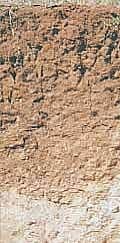 Vertosols- These soils shrink and swell, and crack as the soil dries. Vertosols are used for extensive dryland agriculture where rainfall is adequate, and irrigated agriculture. Problems of water entry are usually related to tillage practices and adverse soil physical conditions at least partly induced by high sodium in the upper part of many profiles. these soils are scattered in areas under alice springs and over wester new south wales, they swell and crack with rainfall and heat and we see a similar soil to hard packed clay and sand, and the cracks looks and feel familar to natural slate tile.
Vertosols- These soils shrink and swell, and crack as the soil dries. Vertosols are used for extensive dryland agriculture where rainfall is adequate, and irrigated agriculture. Problems of water entry are usually related to tillage practices and adverse soil physical conditions at least partly induced by high sodium in the upper part of many profiles. these soils are scattered in areas under alice springs and over wester new south wales, they swell and crack with rainfall and heat and we see a similar soil to hard packed clay and sand, and the cracks looks and feel familar to natural slate tile.
and lastely we have Tenosols- Widespread in the eastern half of the continent where vast areas occur as red and yellow sand-plains. Large areas in Western Australia have red loamy soils with a red-brown hardpan at shallow depths. Due to their poor water retention, almost universally low fertility and occurrence in regions of low and erratic rainfall, Tenosols are of limited occurrence in cropping regions. this soil is prominant over there area were uluru (ayers rock) sits and through most of western australia. it is also a hard packed sand of red and rellow distinction, mostly red through the area of central australia, and it has poor water retention leaving a hard packed soil, called hardpan. hardpan is a layer of hard matter, especially clay, that lies under soft soil and that plant roots cannot penetrate. in the areas through western australia and northern of htis state, NOT in the central austrlian region we see a somewhat sandy region typical to the northern western desert of australia (not the central red deserts) and northern nothern territory.
all in all australias soil varies alot but through these few different soil types we see a prominance in the matter clay and sand, we see low water retention, hardpan, hard top soil and the soils temperment to harded and crack with weather turnign from harsh storms to dry hot, back to humid weather.
the soil over various areas consists mainly of hard packed clay and sand/or soil with a prominant colour of red. in order to match this soil completely accepting known un-safe products such as calcium based sand, you would mix clay, or a clay based soil with this calci-sand with moisture, this would dry under heat lamps, and creat a hard substrate, VERY similar to that of the actual soil of this central australian soil. BUT this is very dangerous as the soil hardens when the calcium and carbonates are mixed with water and creates calcrete, whcih causes impaction and death in dragons of all ages.
most sand products for reptiles in pet shops say 'calcium based sand' in which case this is calci-sand and is extremely dangerous, the packagign may say 'edible' but it is NOT digestable. this is were they illude formt he truth and stop them selves from getting sued. this calcium based sand is ezually in various colours including a 'natural looking red' alhtough it may be tempting to make your enclosure look realistic it is dangerous, beardies in the wild so die form impaction when the calcium based sand calcretes with the digestive symstem, this leads to death as there is no means of retreiving this compound of hardened crytalised sand and minerals, in a captive environment i you made the mistake of using this your beardie may need to under go invasive surgery done by a reptile veteirnarian. if the sand is too heavily formed.
BUT, in order to keep the safety of you bearded dragon in mind, i suggest a safe product known as slate tile, this is a product prominantly made of clay or ceramic clay, you can keep natural textures by buyign tiles with surface patterns, in order to highten the cleanlyness i sugest buyign natural patterned glased slate tiles, this gives a natural feel and grip, (thus keepign nails short) whilst making the substrate easily cleanable by simply wipeing up the mess.
in conclusion the SAFEST most naturalistic substrate for your dragon, is glazed textured slate tiles.
Kirby.
some quotes were used from the site http://www.grdc.com.au/growers/oft/soiltype.htm
in conjunction with,
Soil Images: State, Territory and Federal agencies participating in the Australian Collaborative Land Evaluation Program
Landscape Images: Richard Woldendorp, Photographer.
References
Isbell RF (1996) The Australian Soil Classification. (CSIRO Publishing: Melbourne).
Isbell RF, McDonald WS, Ashton LJ (1997) Concepts and Rationale of the Australian Soil Classification. (ACLEP, CSIRO Land and Water: Canberra)
MT connor (about 2 hrs from ULURU and 2hrs from Alice springs.
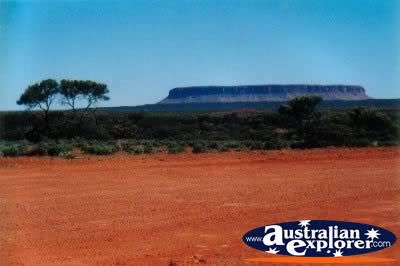
alice springs.
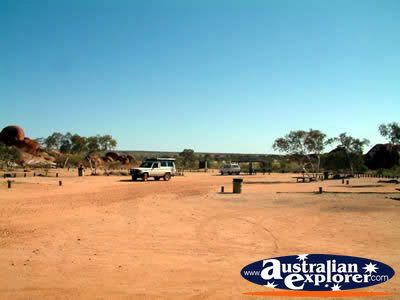
kings cannon (sondosols)
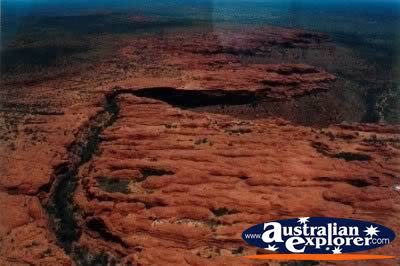
keep in mind the soil images show water retention and soil colours and colaboration, not a surface photo. the sandiest of regions like the tenosols look like ths soil in the photo's of alice spring its a very light layer of dusty sand, but int he areas of western aus (northern) it can become dunes, keep in mine htis is moslty out of reach to the bearded dragon population, some western beardies may be spotted but they usually live in bushland further south.
a bearded dragons natural soil in the central australian region is mainly a soil type called 'kandosols' and in particular 'red kandosols' are well-drained, permeable soils. Most Kandosols have low fertility and are susceptible to surface soil degradation such as hardsetting and crusting.

this surface soil degration, hardsetting and crusting gives the central australian region and outback were central bearded dragon live naturally in the wild, leaves a clay and sand based soil, that is hard set
(solid) and has slight soil degration which gives the effect of a slight dusty layer of fine sand and dust. the clay and sand mix to create 'red kandosols' gives the animal the ability to dig a burrow, or nesting place nearing the end of the wet season and entering the dry season, giving the soil the ability to have a small cavern type nesting spot and dry hard and crusting, still giving the small hatchling dragon the ability to emerge from the egg and dig through this thin crusty layer whilst keepign them safe from climate conditions.
there are many different soil types in austalia, and the GRDC desided to classify these different soil types in the 10 main types in 1996. in each catagory there consists many different variations of this soil, as they are found all over australia in different places. these catagories contain Calcarosols, Chromosols, Dermosols, Ferrosols, Kandosols, Kurosols, Rudosols, Sodosols, Tenosols, and Vertosols.
Now, the area of central australia does not only consist of Kandosols, but also a variation of Calcarosols, Rudosols, Sodosols, Vertosols, and to an extent Tenosols.

*** Calcrete is a chemical balance or configuration that makes the soil go hard, it is when calcium and also magnesium disolve in water when the water evaporates they form small crystals and these crystals can keep growing when more carbonates (chemicals liek calcium and magnesium) gather in the area along with water. this hardens the soil, giving it the name cal-crete (cal for the calcium and other carbonates) and (crete relating to the strength of concret) these carbonates are found naturally in the soil, especially when the soil is high in clacium carbonate. this soil is similar to the dangerous product 'calci-sand' it has the same effect, the calci sand will even harden and become calcrete inside your dragon digestive tract, this can cause problems like impaction which can lead to death. this is why it is dangerous to use calci-sand as a substrate.
for more imformation on calcrete and other hardening of soils relating to sand and calcium and carbonates, read this link http://www.ifgworld.org/subsites/documents/document_view.asp?title=Calcrete&siteid=9&id=135
Rudosols- Rudosols are a widespread and diverse group of soils. Most have few commercial land uses because of their properties or occurrence in arid regions, or both. The largest areas occur in the desert regions of arid central and northwest Australia. In contrast, fertile variants formed in alluvium are used for cropping. this soil is scattered and rarely prominant in one place, except over the area of alice springs, its dy low water retention soil of very hard packed, deep sand and clay, leaving a hard dusty surface.


and lastely we have Tenosols- Widespread in the eastern half of the continent where vast areas occur as red and yellow sand-plains. Large areas in Western Australia have red loamy soils with a red-brown hardpan at shallow depths. Due to their poor water retention, almost universally low fertility and occurrence in regions of low and erratic rainfall, Tenosols are of limited occurrence in cropping regions. this soil is prominant over there area were uluru (ayers rock) sits and through most of western australia. it is also a hard packed sand of red and rellow distinction, mostly red through the area of central australia, and it has poor water retention leaving a hard packed soil, called hardpan. hardpan is a layer of hard matter, especially clay, that lies under soft soil and that plant roots cannot penetrate. in the areas through western australia and northern of htis state, NOT in the central austrlian region we see a somewhat sandy region typical to the northern western desert of australia (not the central red deserts) and northern nothern territory.
all in all australias soil varies alot but through these few different soil types we see a prominance in the matter clay and sand, we see low water retention, hardpan, hard top soil and the soils temperment to harded and crack with weather turnign from harsh storms to dry hot, back to humid weather.
the soil over various areas consists mainly of hard packed clay and sand/or soil with a prominant colour of red. in order to match this soil completely accepting known un-safe products such as calcium based sand, you would mix clay, or a clay based soil with this calci-sand with moisture, this would dry under heat lamps, and creat a hard substrate, VERY similar to that of the actual soil of this central australian soil. BUT this is very dangerous as the soil hardens when the calcium and carbonates are mixed with water and creates calcrete, whcih causes impaction and death in dragons of all ages.
most sand products for reptiles in pet shops say 'calcium based sand' in which case this is calci-sand and is extremely dangerous, the packagign may say 'edible' but it is NOT digestable. this is were they illude formt he truth and stop them selves from getting sued. this calcium based sand is ezually in various colours including a 'natural looking red' alhtough it may be tempting to make your enclosure look realistic it is dangerous, beardies in the wild so die form impaction when the calcium based sand calcretes with the digestive symstem, this leads to death as there is no means of retreiving this compound of hardened crytalised sand and minerals, in a captive environment i you made the mistake of using this your beardie may need to under go invasive surgery done by a reptile veteirnarian. if the sand is too heavily formed.
BUT, in order to keep the safety of you bearded dragon in mind, i suggest a safe product known as slate tile, this is a product prominantly made of clay or ceramic clay, you can keep natural textures by buyign tiles with surface patterns, in order to highten the cleanlyness i sugest buyign natural patterned glased slate tiles, this gives a natural feel and grip, (thus keepign nails short) whilst making the substrate easily cleanable by simply wipeing up the mess.
in conclusion the SAFEST most naturalistic substrate for your dragon, is glazed textured slate tiles.
Kirby.
some quotes were used from the site http://www.grdc.com.au/growers/oft/soiltype.htm
in conjunction with,
Soil Images: State, Territory and Federal agencies participating in the Australian Collaborative Land Evaluation Program
Landscape Images: Richard Woldendorp, Photographer.
References
Isbell RF (1996) The Australian Soil Classification. (CSIRO Publishing: Melbourne).
Isbell RF, McDonald WS, Ashton LJ (1997) Concepts and Rationale of the Australian Soil Classification. (ACLEP, CSIRO Land and Water: Canberra)
MT connor (about 2 hrs from ULURU and 2hrs from Alice springs.

alice springs.

kings cannon (sondosols)

keep in mind the soil images show water retention and soil colours and colaboration, not a surface photo. the sandiest of regions like the tenosols look like ths soil in the photo's of alice spring its a very light layer of dusty sand, but int he areas of western aus (northern) it can become dunes, keep in mine htis is moslty out of reach to the bearded dragon population, some western beardies may be spotted but they usually live in bushland further south.



